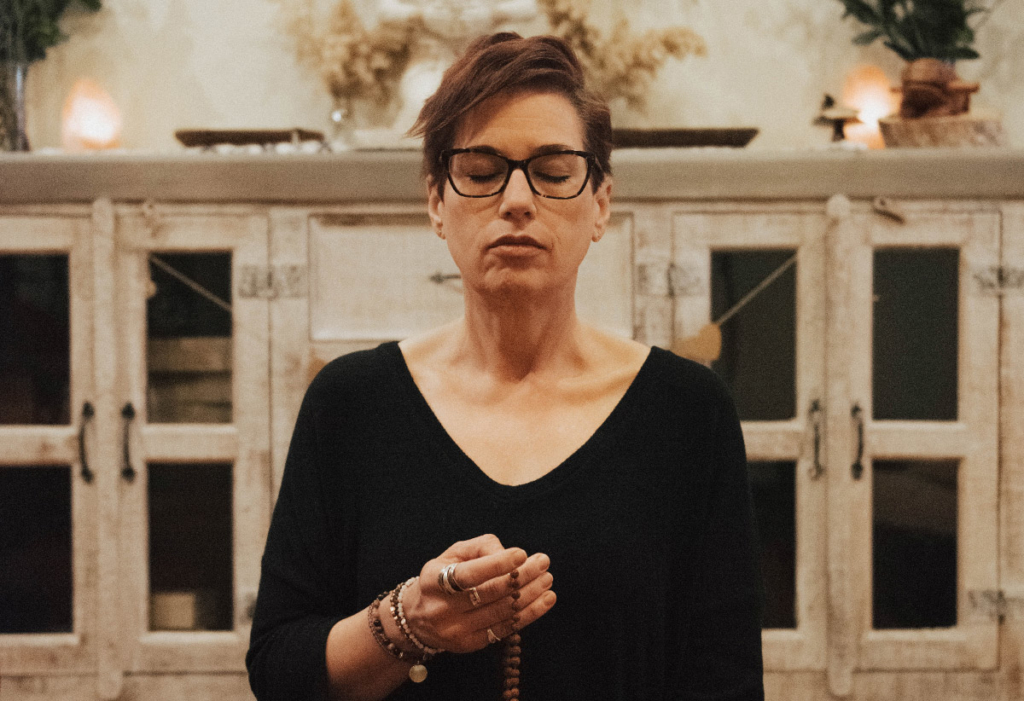
Sometimes when I tell a friend I’ll be going on a silent meditation retreat, they’ll respond, “That sounds so peaceful.” That’s when I know they probably haven’t been on a meditation retreat. It’s true that these days, after 33 years of practice, I often feel deep equanimity while on retreat. But the journey to equanimity can be rocky. The truth is, sometimes meditation isn’t peaceful.
The idea that meditation should be peaceful is actually one of the biggest obstacles to experiencing peaceful meditation. Popular imagery reinforces the idea that meditation should look a certain way. How many photos have you seen of a solitary person meditating on a beach before a dramatic sunset?
Pleasant as these images are, the truth is that meditation isn’t peaceful 100 percent of the time. And the idea that it should be often causes people to give up. If you’ve tried meditation, you probably understand. When you sit and do nothing, it seems like the mind becomes more active than ever. But what’s really happening is that you’re noticing the normal state of the mind, maybe for the first time. The mind is simply doing what it always does. You’re just now noticing it.
The Rocky Road to Inner Peace
When I teach mindfulness, I always make this clear at the outset. If students ask me about my decades of going on long silent retreats, here’s how I explain it. (And this is absolutely true.) Ninety percent of it has been dredging up my “stuff” and then dealing with it. Of course, it’s not so easy. Sometimes the “dealing with it” part takes decades. Our stuff can be pretty deeply embedded.
But the point is that when we start to dig a bit deeper into our psyches, we excavate some stuff we didn’t realize (or want to realize) was there. It may be uncomfortable or even painful. But it’s an important aspect of practice. We can’t live freely if we’re being unconsciously controlled by hidden patterns. It’s only when we shine a light on the stuff we’ve buried that we can live our lives authentically. So when our meditation isn’t peaceful, when we’re digging up “treasures”—pleasant and unpleasant—that’s when our meditation is working.
How to Practice When Meditation Isn’t Peaceful
Here are some things I’ve learned over the years that have helped me alleviate anxiety when my meditation isn’t peaceful.
- You’re not doing something wrong. Everyone experiences challenges in meditation. The point is not to banish your thoughts or get rid of challenging physical/mental/emotional states. The practice is to learn to respond skillfully to difficult physical, mental and emotional sensations and thoughts. The only way to hone this skill is to actually practice it when your meditation feels challenging. So let go of the idea that your practice is supposed to be blissful and peaceful. That idea will only cause anxiety.
- Ground yourself in your body. If you’re feeling difficult emotions or mental states, direct your attention to your body. What’s present in your body? If you’re feeling emotion, where is it located? Does it come and go? Is it in the background or the foreground? Does it intensify? Does it sometimes fade? Investigating an emotion or mental state as sensation in the body can help you detach from the story behind it. Dwelling on thoughts about past events, worries, etc. will likely keep the process alive.
- Go easy on yourself. If a particularly difficult or traumatic situation shows itself, take it on in small bites. For example, if you’ve recalled a traumatic event, investigate the physical sensations as above for a few minutes. Then return to your breath, or maybe do a few minutes of kindness practice for yourself.
Peaceful Meditation Doesn’t Depend on What’s Present
So often we label a meditation where bliss is present as a “good” meditation. So when what’s present during meditation is unpleasant, we deem it to be “bad” meditation. One of my teachers, Joseph Goldstein, says that it doesn’t matter what’s present—pleasant or unpleasant. What matters is how we respond to it. Sometimes our meditation will be pleasant and peaceful. At other times it won’t. That’s the nature of our lives.
Pema Chodron says, “You are the sky. Everything else is just the weather.” The sky is clear and infinite. Storms, winds, brutal sun may be present at any given moment. But the nature of the sky remains unchanged. Our awareness is the same. At times when your meditation isn’t peaceful, remember that this is simply a passing storm. It’s not who you are. The pathway through the storm can be rocky. But it’s a journey well worth taking.
